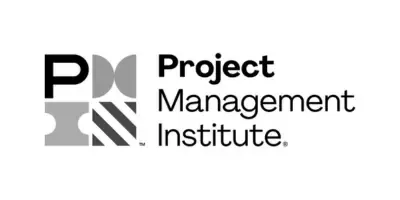The Art of Giving and Receiving Feedback in Leadership Development
Effective leadership is a dynamic journey that requires constant growth and self-improvement. One of the most vital tools in a leader's arsenal is the ability to give and receive feedback. The Art of Giving and Receiving Feedback in Leadership Development is not merely a skill; it's a profound art form. In this comprehensive guide, we will explore the nuances of feedback in the context of leadership, uncovering strategies, techniques, and best practices that can transform leaders into their best selves.
Understanding the Power of Feedback
What is Feedback?
Feedback is a two-way street that involves providing information about someone's performance or behavior and receiving a response in return. It serves as a mirror that reflects strengths and weaknesses, offering a path for improvement.
The Impact of Feedback
1. Growth: Constructive feedback fuels personal and professional growth. It helps leaders identify areas for improvement and refine their skills.
2. Engagement: Leaders who actively seek and provide feedback create a culture of engagement. Team members feel valued and heard, which enhances their commitment.
3. Alignment: Feedback ensures that leaders are aligned with organizational goals and expectations. It keeps them on track and focused on what matters most.
The Art of Giving Feedback
Purpose of Feedback
Effective feedback is not criticism; it's a tool for improvement. It should be given with the intention of helping the recipient grow and succeed.
Feedback Sandwich
The feedback sandwich is a popular approach that involves sandwiching constructive feedback between positive comments. This technique softens the impact of criticism and makes it more palatable.
Specificity Matters
Vague feedback lacks impact. It's essential to be specific about what the recipient did well or needs to improve. Specific feedback provides clear guidance.
The Art of Active Listening
Active listening is crucial when giving feedback. It involves fully engaging with the recipient, showing empathy, and asking open-ended questions to encourage dialogue.
The Art of Receiving Feedback
Welcoming Feedback
Leaders who are open to receiving feedback create an environment where honesty and growth are valued. Welcoming feedback is a sign of maturity and self-awareness.
Overcoming Defensiveness
Receiving criticism can trigger defensiveness, but the art of receiving feedback involves staying open-minded and reframing criticism as an opportunity for growth.
Reflecting and Acting
After receiving feedback, take time to reflect on it. Identify actionable steps for improvement and follow through. Demonstrating that you value feedback by acting on it is essential.
Feedback in Leadership Development
Leadership Feedback Loop
Leadership development should incorporate a continuous feedback loop. Regular check-ins, 360-degree feedback, and self-assessments all play a role in this process.
Role Modeling Feedback
Leaders who model the art of giving and receiving feedback set a powerful example for their teams. When leaders actively seek feedback and apply it, they encourage their teams to do the same.
Addressing Performance Issues
Feedback is essential when addressing performance issues. Leaders should provide timely, clear, and actionable feedback to help team members improve.
Fostering a Feedback Culture
Creating a culture where feedback is encouraged and embraced is a leadership achievement in itself. It promotes transparency, trust, and continuous improvement.
Conclusion
The Art of Giving and Receiving Feedback in Leadership Development is a powerful skill that can elevate leaders to new heights of effectiveness. Feedback, when given and received with care and intention, becomes a catalyst for growth, engagement, and alignment with organizational goals. In the evolving landscape of leadership, mastering this art is not optional; it's a fundamental requirement for success. So, embrace the art of feedback, for it is the key to becoming the best leader you can be.
FAQs about the Art of Giving and Receiving Feedback in Leadership Development
Q1: How can I give feedback without hurting someone's feelings?
A1: Begin with positive feedback, be specific about areas for improvement, and offer support and guidance for growth. Focus on behaviors and actions, not personal attributes.
Q2: What if I disagree with feedback I've received?
A2: It's okay to seek clarification or additional context. Consider the feedback with an open mind, and if you still disagree, politely share your perspective while remaining open to constructive criticism.
Q3: How can I encourage my team to provide honest feedback?
A3: Create a safe space for feedback by actively seeking it, being receptive, and emphasizing its value. Encourage anonymity if necessary and ensure there are no negative consequences for honesty.
Q4: Is feedback only necessary for leaders, or should it be a two-way street?
A4: Feedback should flow in all directions within an organization. Leaders, team members, and peers should all engage in giving and receiving feedback to foster growth and improvement.
Q5: Can feedback be given in written form, or is verbal communication better?
A5: Both written and verbal feedback have their place. Verbal feedback can be more immediate and personal, while written feedback allows for careful consideration and documentation.
Q6: How can I maintain a positive relationship with someone I've given critical feedback to?
A6: Emphasize your support for their growth and well-being. Continue to engage with them positively and provide ongoing encouragement and guidance.
Interested in a free Leadership Skills Workshop with your team?
- Address instantly fixable issues that impact customer perceptions and employee morale.
- Learn and practice a habit that will raise employee performance.
- Set actions with specific and measurable steps that they'll gladly be accountable to achieve.











